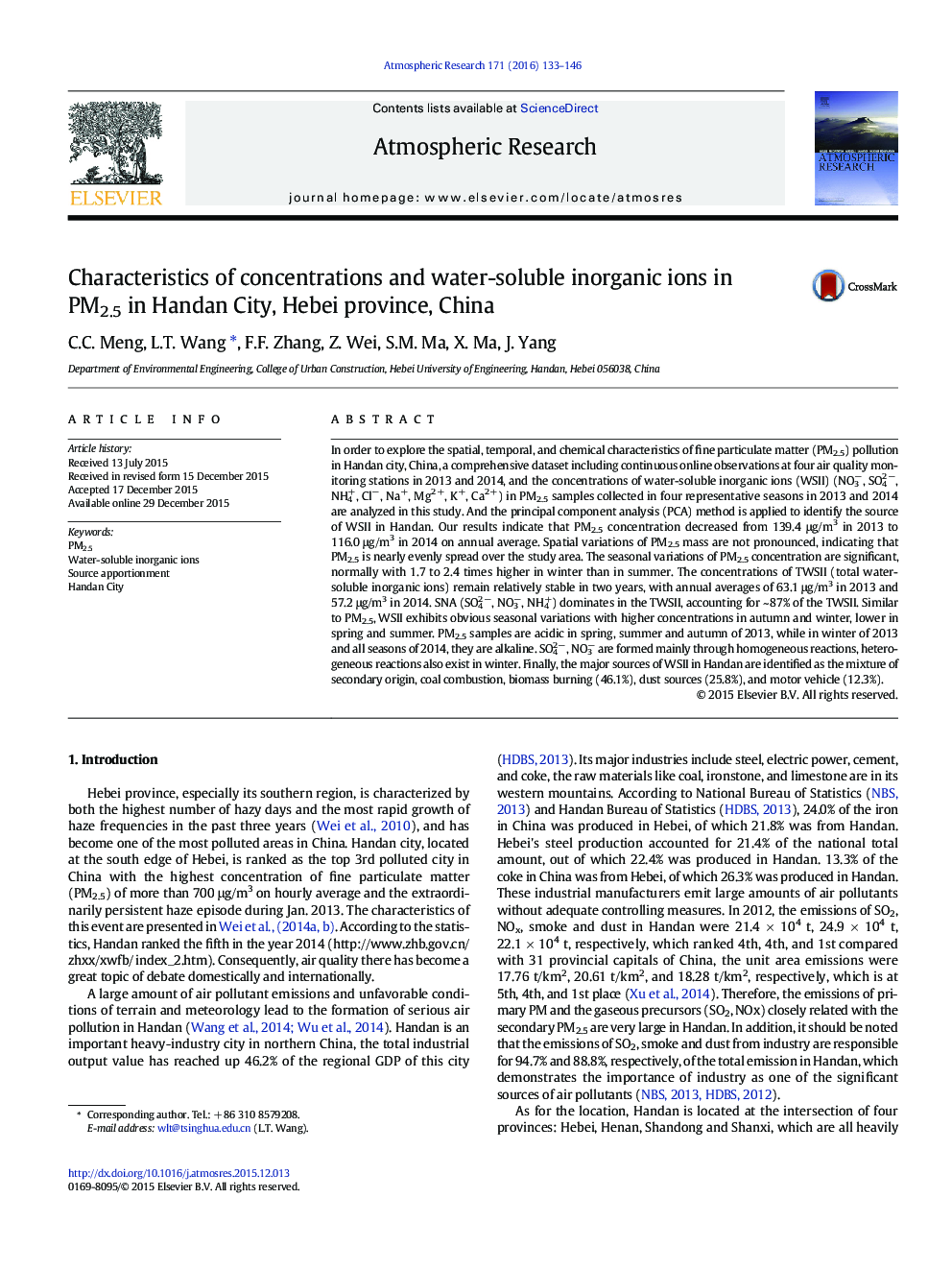| کد مقاله | کد نشریه | سال انتشار | مقاله انگلیسی | نسخه تمام متن |
|---|---|---|---|---|
| 4449608 | 1620506 | 2016 | 14 صفحه PDF | دانلود رایگان |

• The annual average concentrations of PM2.5 were 139.4 and 116.0 μg/m3 in 2013 and 2014, respectively.
• SO42-, NO3- and NH4+ accounted for 85.5%-87.2% of TWSII in 2013 and 2014.
• SO42- and NO3- are formed mainly through homogenous reactions, the heterogeneous reactions also occur in winter.
• Secondary origin aerosol, coal combustion, and biomass burning are the major sources of WSII.
In order to explore the spatial, temporal, and chemical characteristics of fine particulate matter (PM2.5) pollution in Handan city, China, a comprehensive dataset including continuous online observations at four air quality monitoring stations in 2013 and 2014, and the concentrations of water-soluble inorganic ions (WSII) (NO3−, SO42 −, NH4+, Cl−, Na+, Mg2 +, K+, Ca2 +) in PM2.5 samples collected in four representative seasons in 2013 and 2014 are analyzed in this study. And the principal component analysis (PCA) method is applied to identify the source of WSII in Handan. Our results indicate that PM2.5 concentration decreased from 139.4 μg/m3 in 2013 to 116.0 μg/m3 in 2014 on annual average. Spatial variations of PM2.5 mass are not pronounced, indicating that PM2.5 is nearly evenly spread over the study area. The seasonal variations of PM2.5 concentration are significant, normally with 1.7 to 2.4 times higher in winter than in summer. The concentrations of TWSII (total water-soluble inorganic ions) remain relatively stable in two years, with annual averages of 63.1 μg/m3 in 2013 and 57.2 μg/m3 in 2014. SNA (SO42 −, NO3−, NH4+) dominates in the TWSII, accounting for ~ 87% of the TWSII. Similar to PM2.5, WSII exhibits obvious seasonal variations with higher concentrations in autumn and winter, lower in spring and summer. PM2.5 samples are acidic in spring, summer and autumn of 2013, while in winter of 2013 and all seasons of 2014, they are alkaline. SO42 −, NO3− are formed mainly through homogeneous reactions, heterogeneous reactions also exist in winter. Finally, the major sources of WSII in Handan are identified as the mixture of secondary origin, coal combustion, biomass burning (46.1%), dust sources (25.8%), and motor vehicle (12.3%).
Journal: Atmospheric Research - Volume 171, 1 May 2016, Pages 133–146